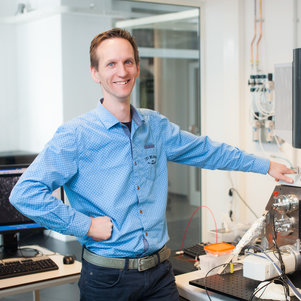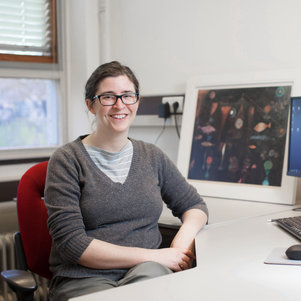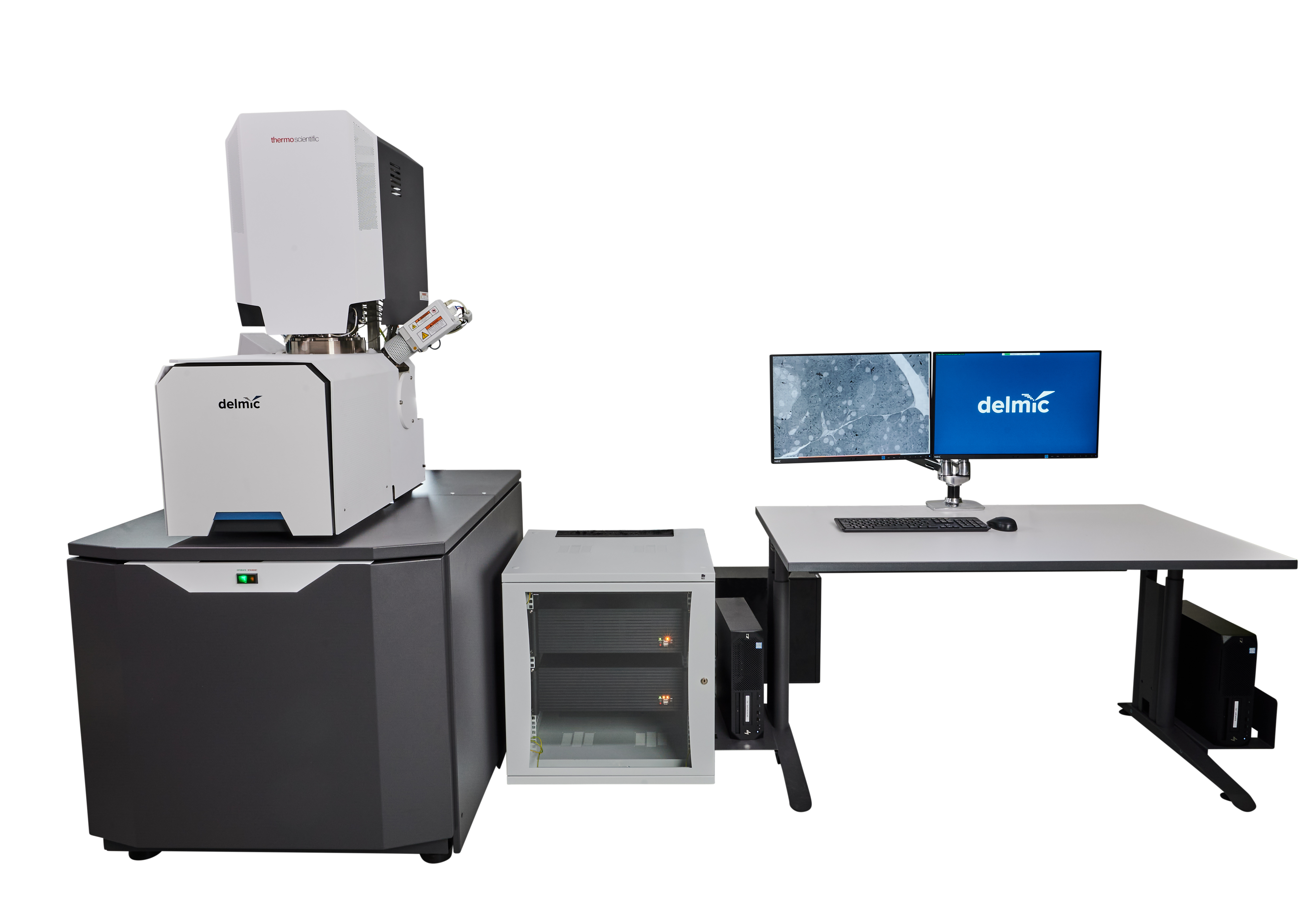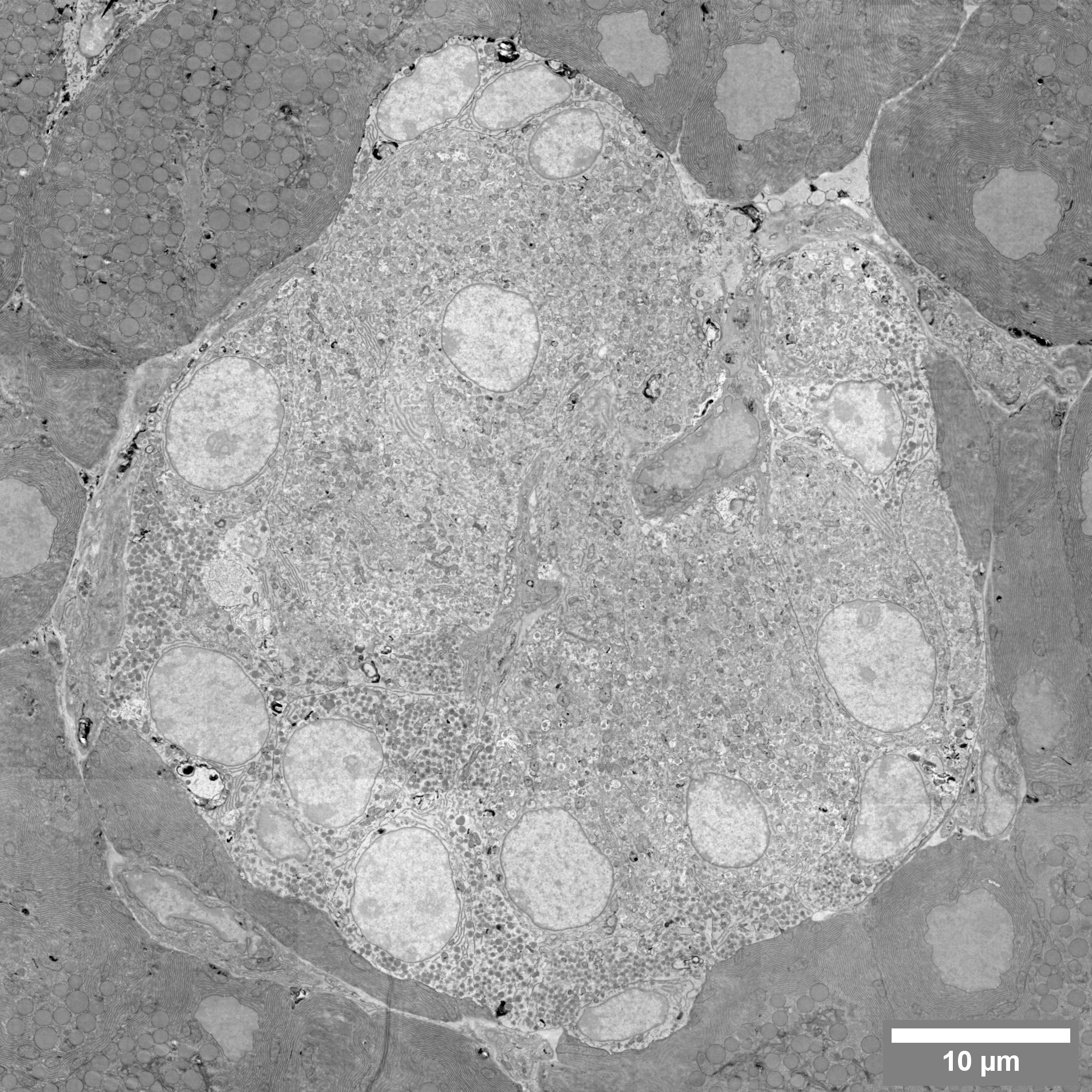From imaging to analysing: how Delmic’s new FAST-EM system is changing electron microscopy
Applied Sciences spin-off Delmic is launching an automated ultra-fast system, FAST-EM, which uses 64 electron beams. Reliable and extremely fast, FAST-EM is aimed at imaging biological samples without the need to constantly babysit the machine.
FAST-EM system was created by a consortium, consisting of Delmic, Thermo Fisher, Technolution and Delft University of Technology (TU Delft): each party brought a different type of expertise to the table, which was necessary to develop and build this next generation microscopy system. The goal was to create a system which can routinely image many samples while retaining large-scale context.
If you look at the current state of microscopy, there is always somebody who needs to be at the machine, so you are extremely limited in how many samples you can image in a day. We think that it’s really important that there is a new kind of microscope, which is automated and fast, and which allows people to use electron microscopy in a whole new way.
Sander den Hoedt, Delmic CEO
At its core the system solves three main challenges of modern electron microscopy. First, it significantly increases the acquisition speed, which allows both context and high-resolution details to be imaged. The ability to get both a complete overview and in-depth data at a nanometer-range resolution is extremely beneficial for the systematic comparison of cells and tissues and can contribute to the development of clinical applications.
Second, the system has a very high sustained throughput, approximately 100 times faster than current scanning electron microscopes. By removing the need to constantly exchange samples and make system adjustments, samples can be imaged both faster and over longer periods of time. By focusing on sustained throughput as opposed to only the peak acquisition rate, the consortium has focused on removing all the bottlenecks in the imaging workflow. The FAST-EM system is reliable, stable, and highly automated, enabling the acquisition of hundreds or even thousands of images.
At present, throughput is one of the major limitations in electron microscopy, especially in imaging facilities. A user typically receives images of parts of the sample that have been selected for recording. With FAST-EM, each user can receive the data from the full section or multiple sections and virtually browse and analyze these later. Besides practical reasons, this also makes it possible to span larger areas and volumes and analyze the structural lay-out of biological systems from the molecular scale to the level of an entire organ.
Jacob Hoogenboom, Associate Professor at TU Delft
Finally, the reliable automation allows the operator to step away from the system and let it run without supervision for up to 72 hours. The goal is to take pressure off the operators, who no longer need to spend substantial amounts of time behind the microscope to search for the structure of interest and for sample loading. This leaves the operator free to perform analysis or support an imaging facility instead.
By eliminating many of the current microscopy bottlenecks, FAST-EM will be able to help researchers and facilities image hundreds or thousands of sample sections 100 times faster, decreasing the imaging time from months to only days or hours. FAST-EM can be used to explore such things as cell architecture, the interaction of neuronal circuits, and all kinds of biological material. It is extremely beneficial for large volume 3D imaging, large scale 2D imaging and, in general, as a tool that can significantly speed up daily microscopy facility work. The ability to image large areas of biological tissue within a short time span will open up many new avenues of discovery, not only in fundamental research but also in drug targeting and potentially even personalized medicine.
EM remains the gold standard method to resolve the structure of the synapse. In connectomics, we need to image tens of thousands of thin sections to reconstruct all the connections in a neural network. FAST-EM will make it possible to image more brains so we can start to compare individual animals.
Elizabeth Carroll, Assistant Professor at TU Delft
About Delmic
Delmic is a passionate high-tech company based in Delft, the Netherlands, that spun out of research conducted at the Faculty of Applied Sciences department of Imaging Physics on integrated light and electron microscopy. Starting with cathodoluminescence and correlative light and electron microscopy solutions, the company has expanded its product line to include multibeam FAST-EM system, as well as solutions that aim to simplify the complex workflows involved in cryo-ET. Delmic systems are used by researchers and companies all over the world in fields ranging from life sciences, geology, materials science to nanophotonics.

Dr. ir. Jacob Hoogenboom


